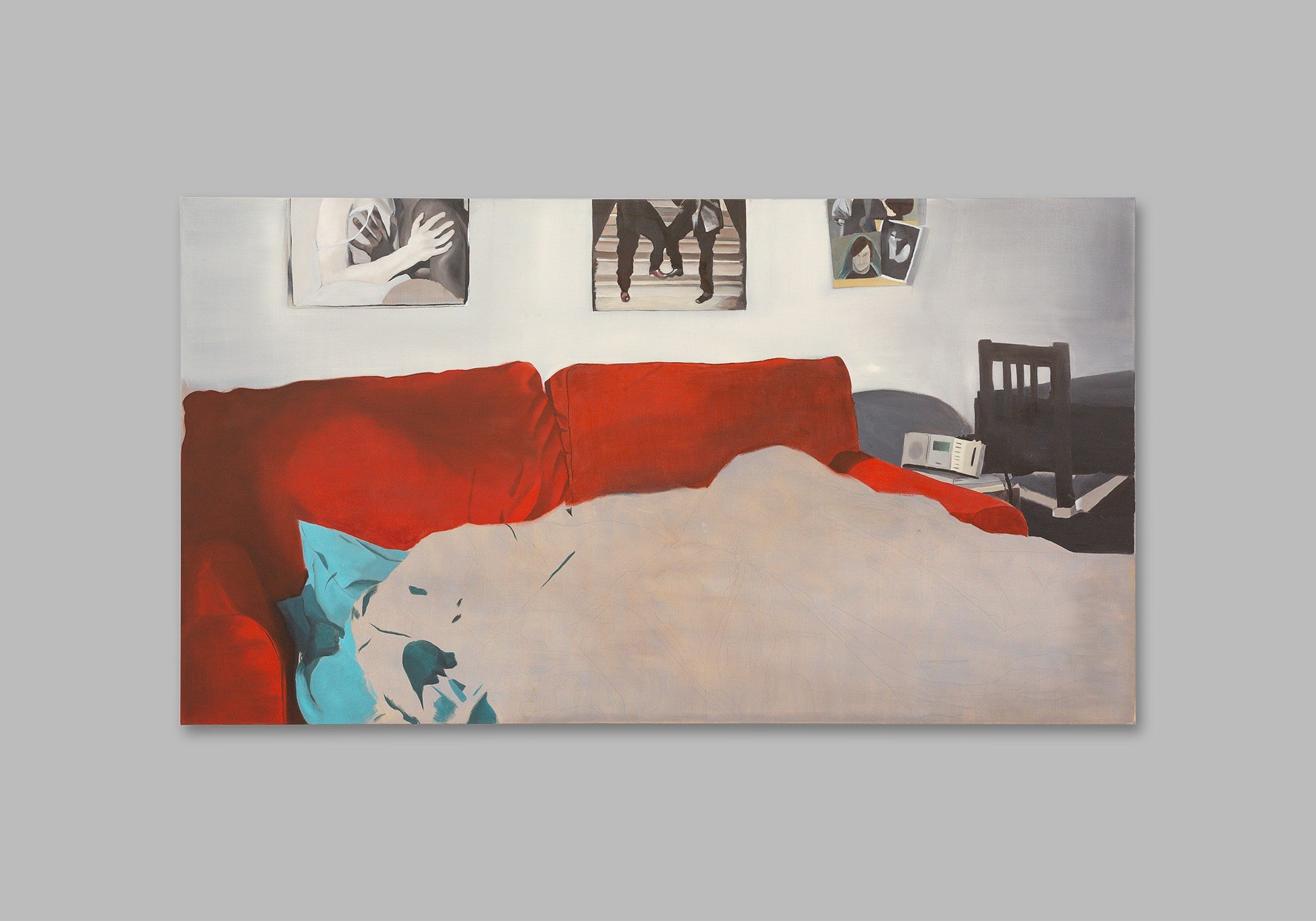VISUAL QUEST: SEVEN ARTISTS COME OF AGE IN SWITZERLAND
There’s no mistaking Switzerland’s artful ambitions. You can trace its roots back to the early 20th century when Dadaism – the philosophical and artistic movement – was born in Zurich. Today, with Engadine Valley’s splashy contemporary scene alongside the famed Art Basel, whose annual festival brings modern collectors and cutting-edge artists to one meeting place, you’ll find no shortage of visual delights. You’ll also discover several emerging Swiss artists – living, working, and creating in a constantly evolving landscape. Just below, Komos shares a welcoming crop of up-and-coming Swiss artists.
Contemporary Surrealism and lucid dream-like imagery make up much of artist Louisa Gagliardi’s moody, large-scale pieces. Using her friends as subjects – Gagliardi’s mix of paintings, blown-up prints and mysterious film-noirish leaning pieces seem to reveal something hauntingly familiar – a recognizable place or scene we might have unknowingly been a part of. Carrying a sketchbook around for inspiration, Gagliardi’s looks at the idea of perspective and time. For instance, her Unlimited, Tête-à-Tête (2022), creates an enormous feast, a grandiose dining table where two seemingly disconnected people are slumped post-meal; a lavish setting littered with decadent celebratory trappings – smashed glasses, half-eaten cake and scattered cherries.
A multidisciplinary artist based between London and Basel, Deborah-Joyce Holman is interested in the relationship between pop culture, commerce and politics. Working primarily with video, sculpture and painting, Holman leans heavily on film, TV imagery and Black lesbian characters. The artist also looks at the notion of refusal. Holman says: "It's about what we do, and what we don't do. About how we listen, and how we don't listen. What have we learned to reject as silence?” And, in their recent work, Living Room, Holman’s largest solo exhibition to date, the artist centers their attention on what they dub as “anti-spectacular.”
Through her series of black-and-white photography, the artist Marie Matusz documents her great-grandmother’s country home with replicas of mismatched artworks (i.e. Van Gogh’s sunflowers) along with busy, stylized wallpapers. It’s also a reminder of the passage and suspension of time (the photos are digitally stamped from ‘94). Using historical archives with a futuristic bent, Matusz also explores liminal space and the notion of idleness. She also does deep philosophical and sociological research. “I like the feeling of there not being enough,” the artist said about her process. In her 2022 solo exhibit, Matusz loosely looked at Samuel Beckett’s ‘Mirlitonnades’ poems, which the poet wrote down on calendar pages and napkins. Matusz was interested in the potential of these simple rhymes – or as she reminds us, “the ‘visual mask’ as a viewer… in which I am reflected just as much as the objects and sculptures presented.”
Dorota Gawęda and Eglė Kulbokaitė
At the heart of this duo’s artwork is a strong connection to technology, nature, and gender roles. Since their collaborative joining in 2013, the artists — who also double as avid readers and researchers — have turned to folklore, myths, rituals, and magic (they even dip into rural witchcraft lore) in their works. That’s not all: there’s a window on science, ecology, technology, and artificial intelligence. Inspired by quantum physics in relation to the natural world, Gaweda and Kulbokaite pull at that in-between state; in the realm of the unknown and questioning those far-out notions that our intellect simply cannot explain.
Hide and seek. Change and fluidity. As a self-dubbed “artivist” Dorian Sari leans on political and power relations. Leaving his native Turkey as a teenager, the artist studied at the Sorbonne in Paris. Later, he became interested in the ideas of power and being seen. For instance, Sari’s blurry photographs with jagged shattered glass frames asks us several urgent questions: do you see yourself as the victim or perpetrator? And, how does injustice make you feel? In his ‘Jardin et Jalousie’ series, Sari was inspired by people who hide in their comfort zones, while waiting for the “right moment” to emerge. Identity plays a role too. Using old jackets on hangers with dried flowers – a nod to Oscar Wilde’s day and “when flowers were used as public code, to identify people like yourself,” Sari says.
“Some people make money with art and power, the Montesinos Federation (TMF) makes art with money and power instead,” the artist Elena Montesinos says about her art that explores our current culture: trends, “official” documents, money and power. Using fire to perhaps liberate and purify; Montesinos ignites a series of burning: overdue invoices, parking tickets, receipts, and other pesky documents. The artist also has a virtual alter ego known as “That Girl” who often performs on Instagram, TikTok, and YouTube — a be-seen nod to today’s digital, social promotional-obsessed world and blurring the lines between what is real and what is in another realm. Born in 1971, Montesinos lives and works in Geneva.







